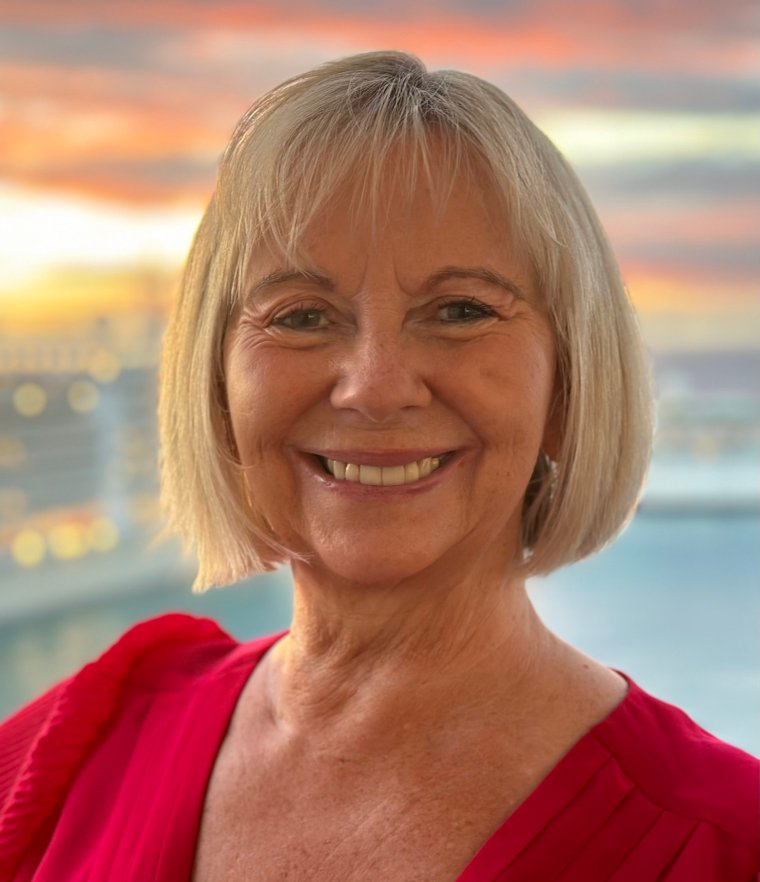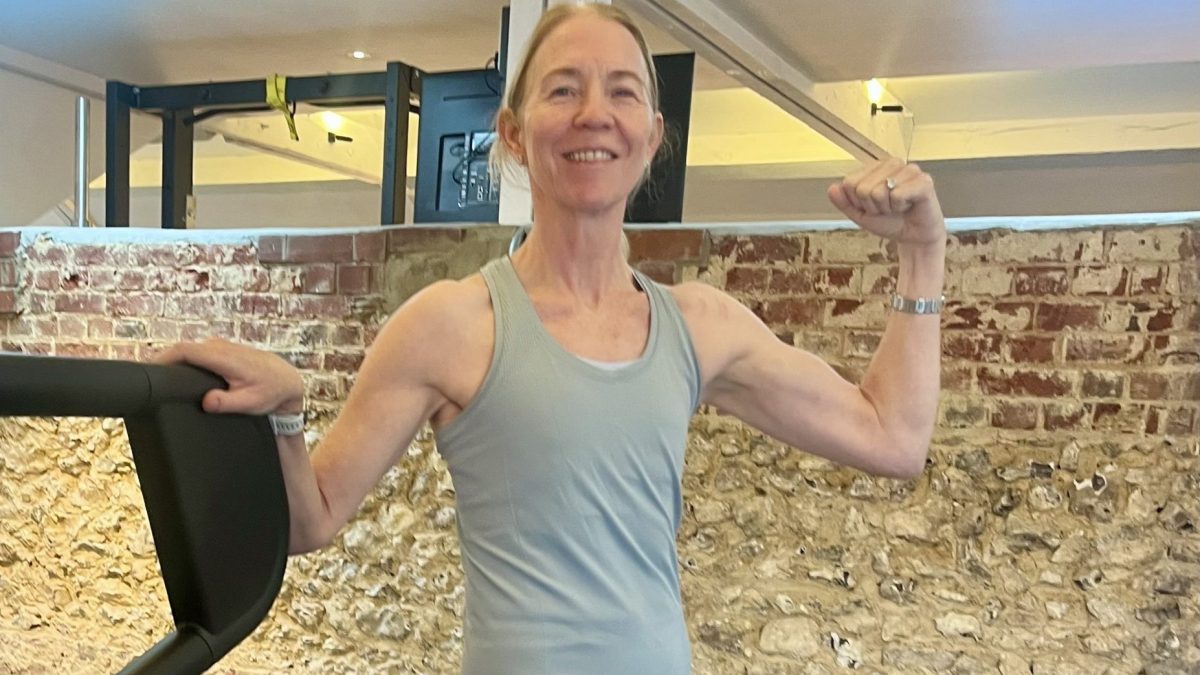Experts warn women that being slim in midlife might seem healthy, but it can raise the risk of brittle bones – so weightlifting is essential
When Linda Marshall was diagnosed with osteoporosis at 55, it came as a “huge shock”. A dance and pilates teacher from Cheshire, she says she felt “cheated” in some ways because she had always been so health-conscious. “I’ve always exercised, followed a good diet, maintained a healthy weight and looked after myself. I’ve never had a cigarette in my life and I don’t really drink very much, just the odd G&T or glass of wine now and again.”
Osteoporosis, a condition where bones lose strength and break more easily, is known as “the silent disease” because most people don’t know they have it until they break a bone. Over 3.5 million people in the UK are currently living with it and it is estimated half of women and a fifth of men over 50 will suffer broken bones because of the condition.
Risk factors include being overweight, smoking and drinking, but as Linda discovered, clean living people can be affected too – and experts are warning that being very slim can be bad for bone strength as you age.
Linda had slipped and fell on a tiled floor while on holiday in Tenerife, shattering her wrist, something which required surgery while abroad. Once back home, her GP noted that she shouldn’t have suffered such an injury just from falling over, so referred her for a bone density (DXA) scan which confirmed an osteoporosis diagnosis.
New FeatureIn ShortQuick Stories. Same trusted journalism.
She was surprised, though she had gone through menopause early and her mother had osteoporosis, too. Once the initial shock of the diagnosis settled, she started looking into what else she could do.
As well as being prescribed osteoporosis medication, she made some lifestyle changes. “As a teacher, you don’t always join in classes as much, so I started exercising more, taking two dance classes a week and I also started seeing a personal trainer once a week, who encourages me to lift heavy weights,” Linda says. “For the last 19 years I’ve taught Pilates, which is weight-bearing, but it’s not enough.”
She also focused on upping her calcium intake. “I’ve never been a great lover of cheese but I started eating cottage cheese. I also try to include protein in all my meals and have started taking a D3 and K2 supplement, as well as magnesium.”
After two years, Linda had a follow-up scan, which showed a big improvement, “so I went into osteopenia which is the precursor to osteoporosis.” Her personal experience has inspired her to encourage her own clients, many of whom are women over 50, to consider strength training as a way to prevent the condition. “At my studio, we now offer a ‘Strong Bones’ class which starts with lighter weights and gradually builds up over six weeks,” she says.
 Linda Marshall was diagnosed with osteoporosis after breaking her wrist on holiday, and embarked on a weights exercise regimen to improve her bone health
Linda Marshall was diagnosed with osteoporosis after breaking her wrist on holiday, and embarked on a weights exercise regimen to improve her bone health
Jenny Eastwood was 47 when she decided to start taking bioidentical hormones to manage the hot flushes and other menopausal symptoms she was experiencing. “The private clinic I was using recommended a whole bunch of blood tests, and because I was very slim they recommended I have a DXA scan, which showed I had osteopenia.”
Again, her diagnosis was unexpected. “I eat healthily, plenty of fruit and veg, not very much processed food or any takeaways. I don’t drink too much, don’t smoke. But I’ve always been very skinny since I was a girl – my BMI probably sits around 19 [the range considered healthy is 18.5 to 24.9], it doesn’t really tend to move much no matter what I eat.”
In addition to starting estradiol, she embarked on a strength programme that focused on weights and exercises with her trainer David Vrettos, a sports injury rehab specialist and coach at Rehab PT. “I’m no great goddess of sport but for 10 years I’ve done one hour of weights a week with Dave either in the gym or on Zoom – it might be squats or hip thrusts or chest presses.”
Jenny says she has now reversed her osteopenia. “I’ve had two scans since my initial diagnosis, the first showed an improvement and now I’m in the normal range and my most recent scan also shows that the inside strength of my bone is really high.” Her strength training has had a positive impact on both her body and mind, she says. “I’ve got lovely toned legs and arms and stomach so that’s quite nice!”
Vrettos says that he sees a number of female clients in clinic, who, like Jenny, have a lower BMI and have received osteoporosis or osteopenia diagnoses. “Having a low BMI essentially means you’ve got less mechanical load on your skeleton, and mechanical load stimulates bone growth. Your bones are constantly in a state of breakdown and building – you replace your skeleton every eight to 10 years. From the age of about 30 you gradually start to lose more than you gain, and this accelerates over the age of 50 for women because of the menopause,” he says.
“It can be quite a scary diagnosis and people often think they can’t do anything about it, but you absolutely can through a range of lifestyle interventions,” he adds. Along with weights, impact exercises like running, jumping, hopping and skipping are important, too. “These movements put between three and 10 times your body weight through your skeleton as you hit the floor, so that creates more mechanical load,” Vrettos says. “But obviously, it depends on someone’s fracture risk, for those with a higher risk we use other interventions and wait for their density to improve before introducing these things.” Finally, exercises that improve balance are the other key component, to reduce the chances of falls and fractures.
Julia Thomson, osteoporosis nurse manager for the Royal Osteoporosis Society, explains that risk factors for the condition can be divided into two camps: “Those that you can do something about and those that you can’t.” Starting with the latter, this encompasses things like genes, which determine the strength of your skeleton, but also having a family history of osteoporosis increases your risk, also age, and your biological sex – osteoporosis is more common in women than men, for two reasons.
“Firstly, as women, we don’t build as strong a bone strength as men during childhood and adolescence. Secondly, women go through a more rapid period of bone loss in the five years around menopause where we lose the protective effect of oestrogen,” Thomson says. Oestrogen is important for keeping bone density stable and maintaining bone strength. “This is why oestrogen is used in hormone replacement therapy as a treatment for osteoporosis after the menopause.”
Certain medical conditions – such as rheumatoid arthritis, parathyroid disease, Crohn’s, and coeliac disease – can increase your osteoporosis risk too, as can some medications, including steroids and anti-epileptic medication.
Then there are risk factors that you can influence to some extent, including smoking or the amount of alcohol you drink (as both can impact the absorption of essential nutrients such as calcium and vitamin D, among other things) and being underweight or overweight. “If you have a lower body weight naturally, you won’t have so much bone tissue in the bank, so when you get to menopause you might lose from a lower point and may potentially find yourself breaking bones more easily from a relatively younger age,” Thomson says. “That doesn’t mean everyone with a lower body weight needs to rush out and see their GP, but it could be worth using our online checker to assess your risk.”
With this in mind, the Royal Osteoporosis Society has launched a new health campaign, The Great British Bone Check, which includes an online tool designed to help users assess their bone health in three minutes.
“Low bone density doesn’t hurt. You could have really fragile bones that won’t give you any symptoms at all until something breaks,” Thomson continues. “And once you’ve broken one bone easily, your risk of another increases. So we’re really trying to prevent that first fracture.”
Best ways to support your bones as you get older, according to the Royal Osteoporosis Society:
Follow a well-balanced diet with adequate calcium to give bones all the nutrients they need
Get enough vitamin D from the sun, topped up with an extra 10 micrograms (400IU) daily from supplements or food, especially in the winter months
Maintain regular weight-bearing and muscle-strengthening exercise at any age
Exercise regularly to maintain bone health, improve balance and reduce your risk of fractures

